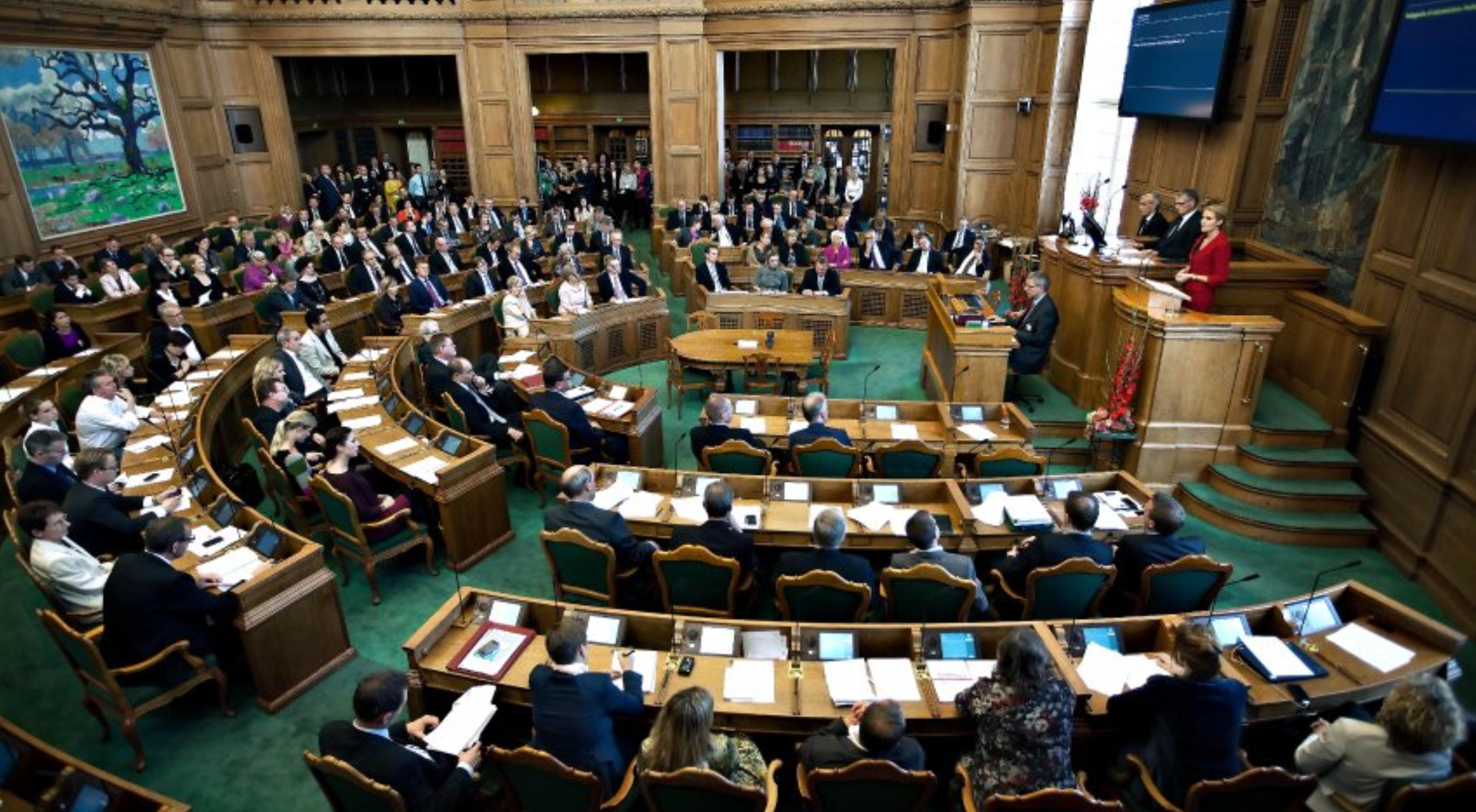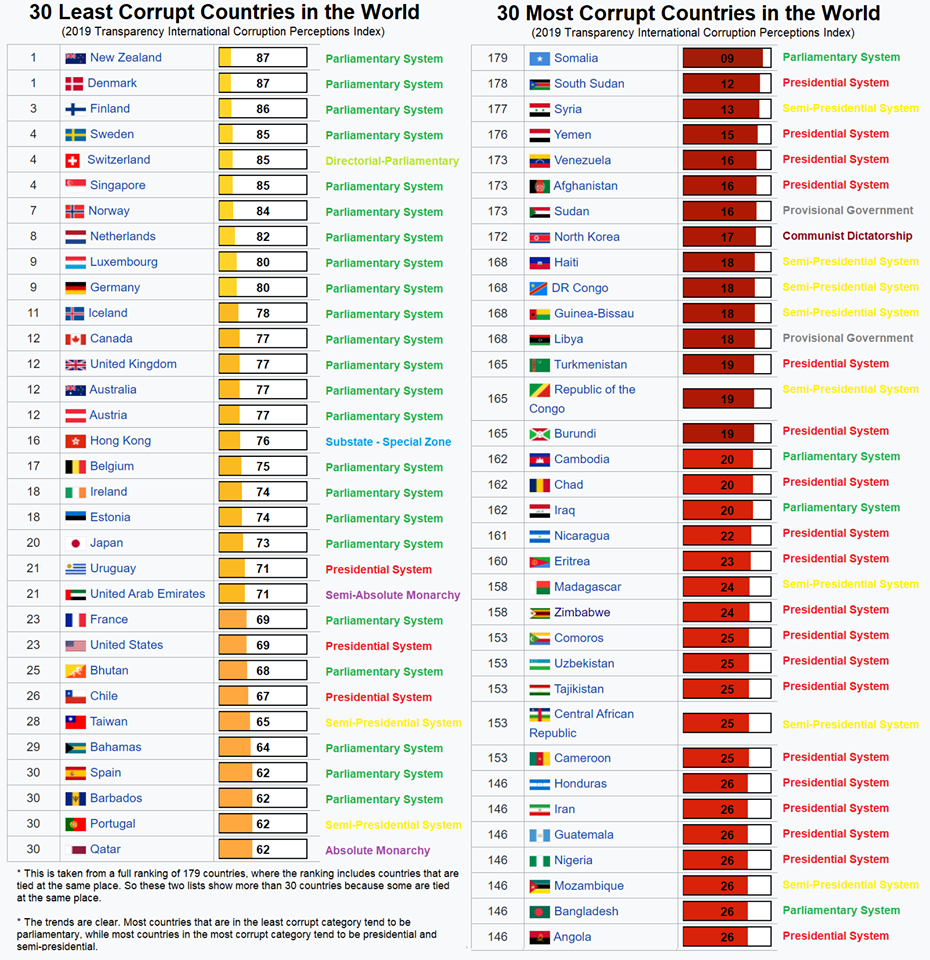

The Folketing: Denmark’s Parliament —- Denmark has consistently been the least corrupt country according to Transparency International’s Corruption Perceptions Index
This is an article written by three economics PhD’s, namely Dr. Norman Loayza, Dr. Daniel Lederman, and Dr. Rodrigo Soares – all Latin Americans – who conducted research to see whether Form of Government had anything to do with levels of Corruption. Interestingly, these three economists aren’t the only people who have done such a study. Two American political scientists – Dr. John Gerring and Dr. Strom Thacker also got the same results.
Looking at this Transparency International ranking of the 30 places of the least corrupt countries in the world versus the 30 places of the most corrupt countries in the world, it’s quite easy to see that most of the Least Corrupt ones happen to use Parliamentary Systems, while most of the Most Corrupt ones happen to use Presidential and Semi-Presidential Systems. Now that’s just simple “naked eye” viewing.

How much more if actual statistical regression analysis was done in order to make a much clearer view of the connection between these two.
Please check out the PDF document embedded below by Drs Lederman, Loazya, and Soares in order to read exactly what the three economists have found out. Another PDF document comes right after the one below.

 I believe: This is a CoRRECT™ Video with a very positive message
I believe: This is a CoRRECT™ Video with a very positive message Walang Natira: Gloc-9's MTV Rap about the OFW Phenomenon
Walang Natira: Gloc-9's MTV Rap about the OFW Phenomenon